A Guide to Toilet Training Neurodiverse children including stool withholding and toilet avoidance
with Guest Melissa Yapp
Toilet Training For Neurodiverse Children
- Discussed in this podcast:
✅ Create toilet training mini-goals – Focus on 5-minute toilet sits after every meal rather than full toilet training
✅ Use visual schedules for wiping process – Break down each step with pictures showing pants down, underwear down, sitting down
✅ Model the toileting process – Take the child with you to the toilet, show them your process, and have them help with toilet paper
✅ Implement social stories for specific challenges – Create stories about pushing out poos, wiping process, or taking laxative medication
✅ Track bowel movements using phone notes – Share notes between caregivers to identify the child’s natural timing patterns
✅ Incorporate toilet time into daily visual routine – Show “first lunch, then 5-minute toilet sit” on the child’s schedule
✅ Start super small with timing – Begin with 1-minute toilet sits and gradually increase rather than expecting 10 minutes
✅ Buy cheap underwear for accidents – Purchase secondhand shorts or cheap undies from discount stores to throw away like nappies
✅ Laminate visuals and make multiple copies – Prepare 3 copies of social scripts in case one gets damaged or lost
✅ Let PDA children take control – Have them tell you “Mom, it’s time for toilet” to give them autonomy in the process
Toilet training kids is a big task even for neuro-typical children. Parents often procrastinate over when to start and we keep delaying it for whatever reason we can think of!
My biggest concern for children with ASD is if they are not out of nappies by five years of age then they often start to lose muscle control and can end up with long term bowel and bladder issues. Toileting is not something that the child will grow into or get better with age. We all need to action ASAP – and this includes schools. If a child is attending pre-school or school when the parents are toilet training then everyone needs to get behind the toileting programme and provide consistency all day every day until the child has mastered it.
Learn how to Toilet Train Kids with Autism Today!

Guest Melissa Yapp
Melissa is a speech pathologist, former special education teacher and a busy mum of two.
Melissa is the founder of ‘The Teaching Speechie’ which provides resources and tools to help teachers make sense of language difficulties in their busy classrooms. She has a special interest in developing visual supports, social stories and other tools to support neurodiverse children both at home and in the classroom.
You can follow Melissa on Instagram at @teachingspeechie or check out her website theteachingspeechie.com for more tips, strategies and resources.
When to Start Toilet Training
Signs of readiness in children with autism are not evident like they are with neuro-typical children. The main sign of readiness is compliance, or the child’s ability to imitate. If you can get the child to do what you ask, and/or copy an action – then they are ready.
Think “toilet TIMING” not “toilet training”
Create good routines around toilet timing. Have set times when the child must go to the toilet. Examples include:
- When they get up in the morning.
- Before leaving the house at any time of the day.
- Before bed (as part of the bedtime routine).
- Any time they may not be able to access a toilet for an hour or more.
- Before going into any water (bath, swimming pool, etc).
- Before getting into the car.
- Before eating i.e. toilet, wash hands, etc.
Why do children with ASD continue to have accidents and take longer to be dry at night?
Some children on the spectrum don’t realise they need to go to the toilet until they are absolutely desperate and it’s literally seconds before they cannot physically hold on any more that they believe that they need to go. This is why often when they go it is a huge flood, or why they often do not night train like other children as their brain doesn’t wake them up until it is too late, if at all.
At school many students need toilet routines as they often don’t think to go in breaks as they don’t notice they need the toilet until their bladder is FULL.
Tips for Toileting
| by Jo Adkins & Sue Larkey | A guide for parents and professionals toilet training children with an autism spectrum disorder. Contents include: When to start toilet training, getting started, the use of rewards, techniques, dealing with accidents, sensory issues, bowel motions, generalising, night time training, frequently asked questions, pages of visuals all ready for you to cut out and use! And lots more! 60 pages of helpful hints and ideas.
$29.95
20 in stock
10 key strategies for toilet training

Avoid potties! Start out wih the end in mind. Children with autism have trouble generalsiing and the last thing you want is to have to carry their potty around wiht you everyhere you go!

Visuals are very important. Make up some visuals to help your child understand the toilet process and to provide a prompt.

Prepare lots of FUN activities to do with your child. Making going to the toilet fun takes the pressure off and makes it a motivating place to go.

Rewards are one of the most important elements of toilet training – children need a motivator as it is just too easy to continue to go in their nappy. Rewards need to be instant and powerful. Reward IMMEDIATELY and reward the same every time.

Base yourself in or right next to the toilet for the first few days of toilet training. Have as many home comforts in the room for the child to make it a fun environment.

Remove nappies. Once you start toilet training, do not let the child put on any form of nappy until they go to bed at night. If you let them wear nappies during the day at all, they will learn to hold on until they are in their nappy.

Toilet time – put the child on the toilet every 30 minutes for 10 minutes at a time, increasing time as they get the hang of it.

Teach the child the whole steps of toileting – including putting on underpants, flushing the toilet and washing hands.

Some children may have sensory sensitivities related to toileting. Sensory sensitivities need to be respected and worked on.

Create good routines around toilet timing. Have set times when the child must go to the toilet.
Want to learn more tips with Sue Larkey?
UNDERSTANDING AuDHD: Teaching & Supporting Students with Autism and ADHD Co-occurrence
✅ 2 Hours, 8 Lessons
✅ 6 Weeks to Complete 🎁 Bonus 6 Months Access (available until 28 Oct 25)
✅ Certificate of Completion
✅ Lesson Transcripts
 2 Hours
2 Hours

$149



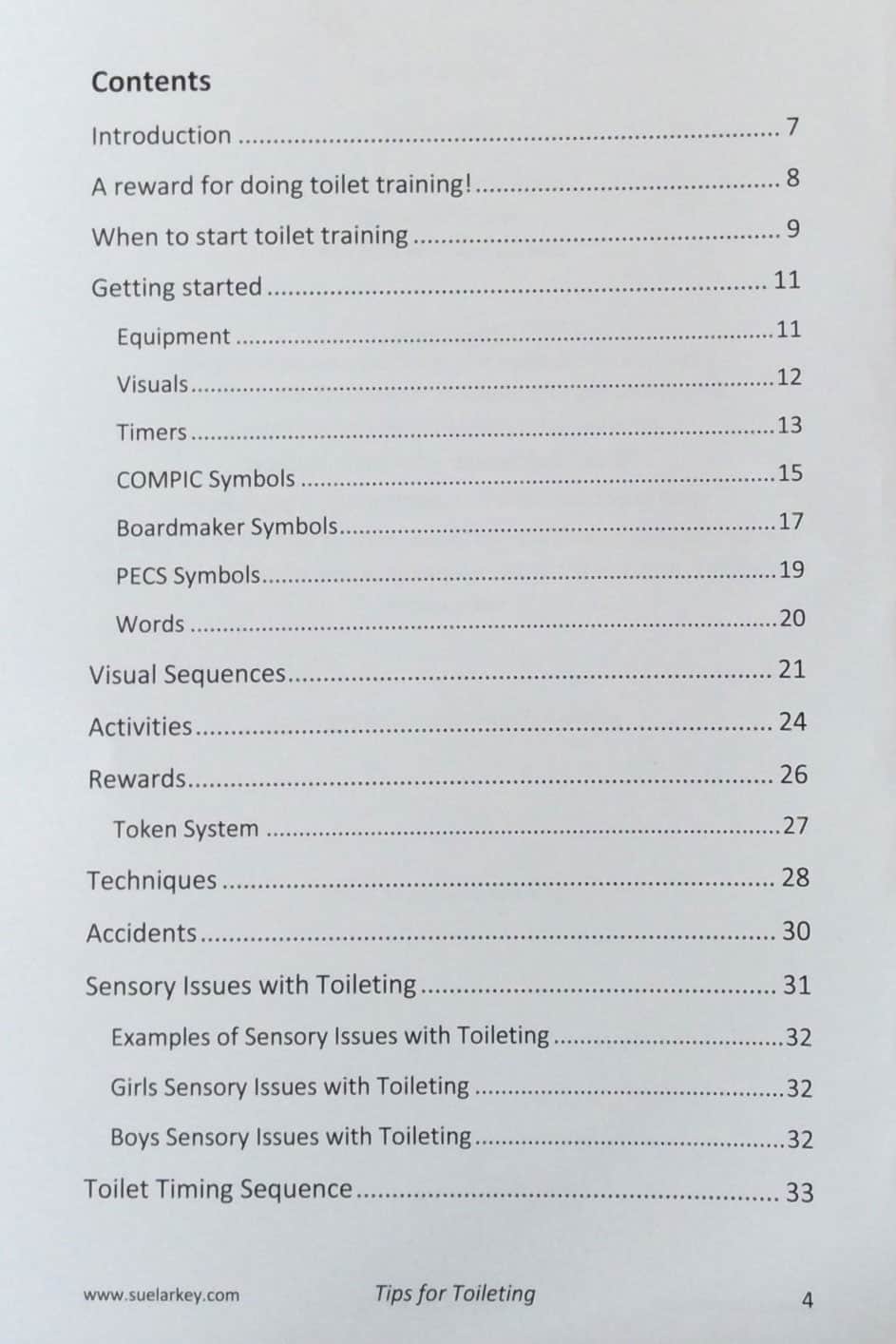
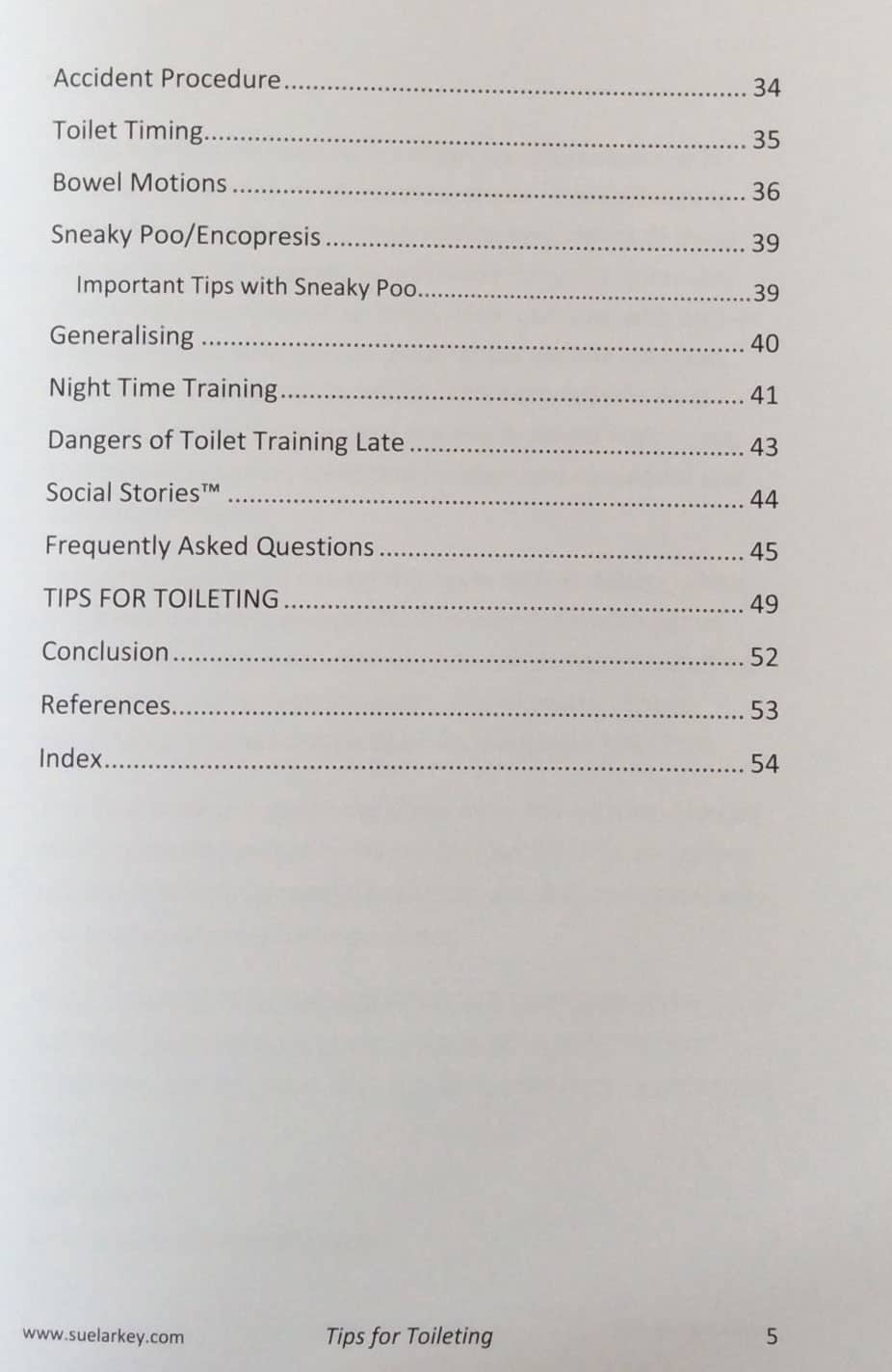
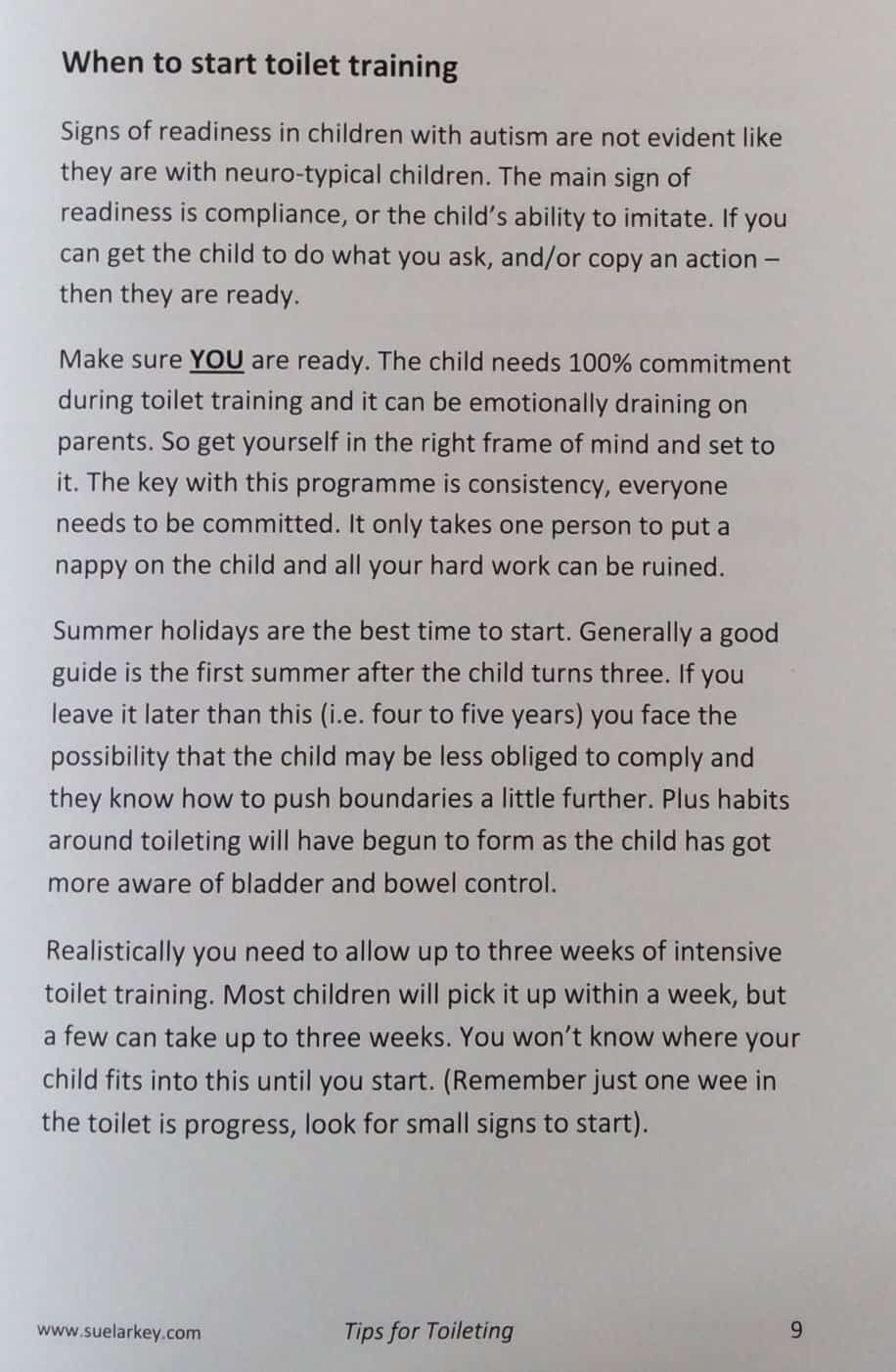
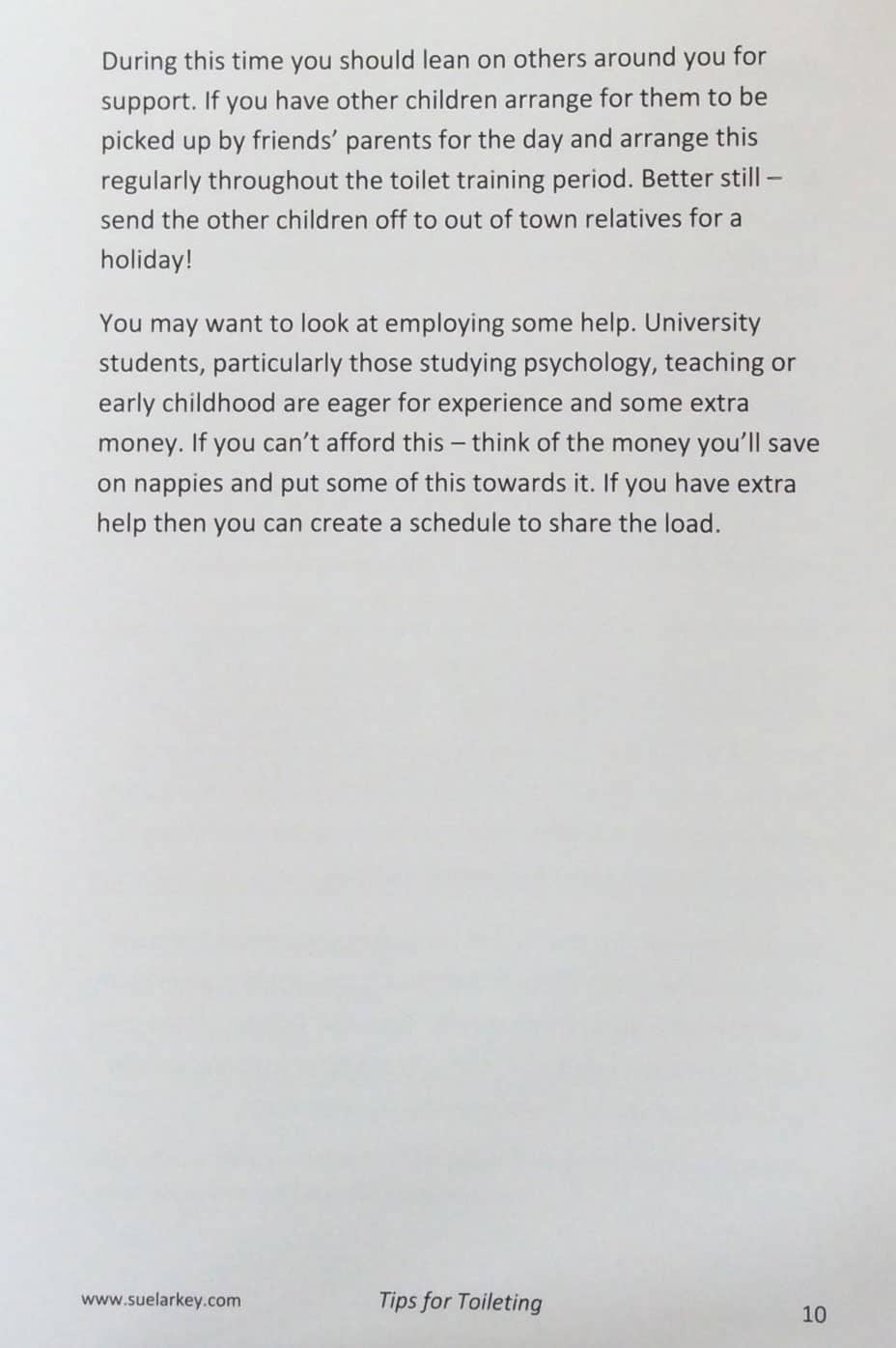
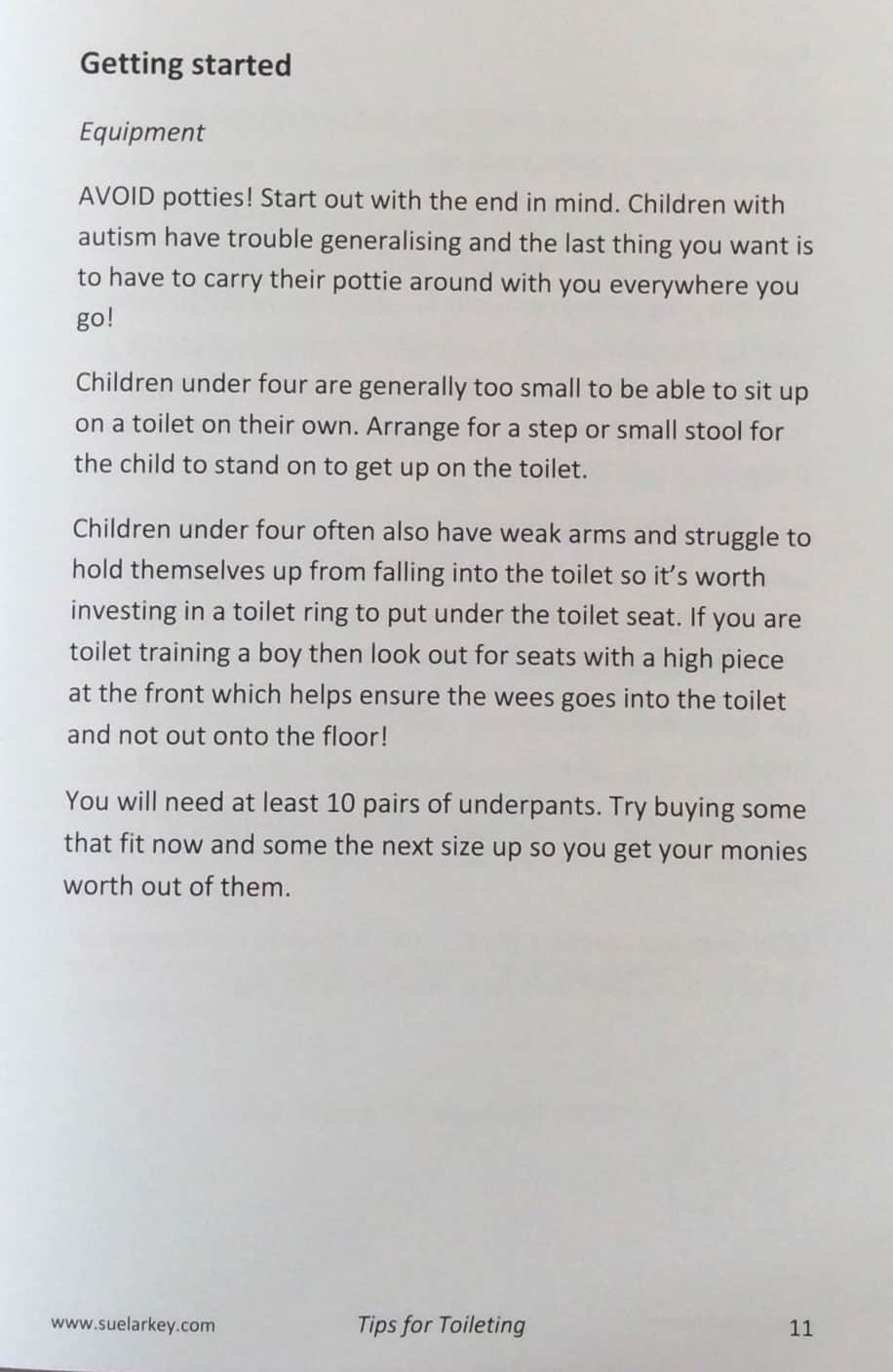


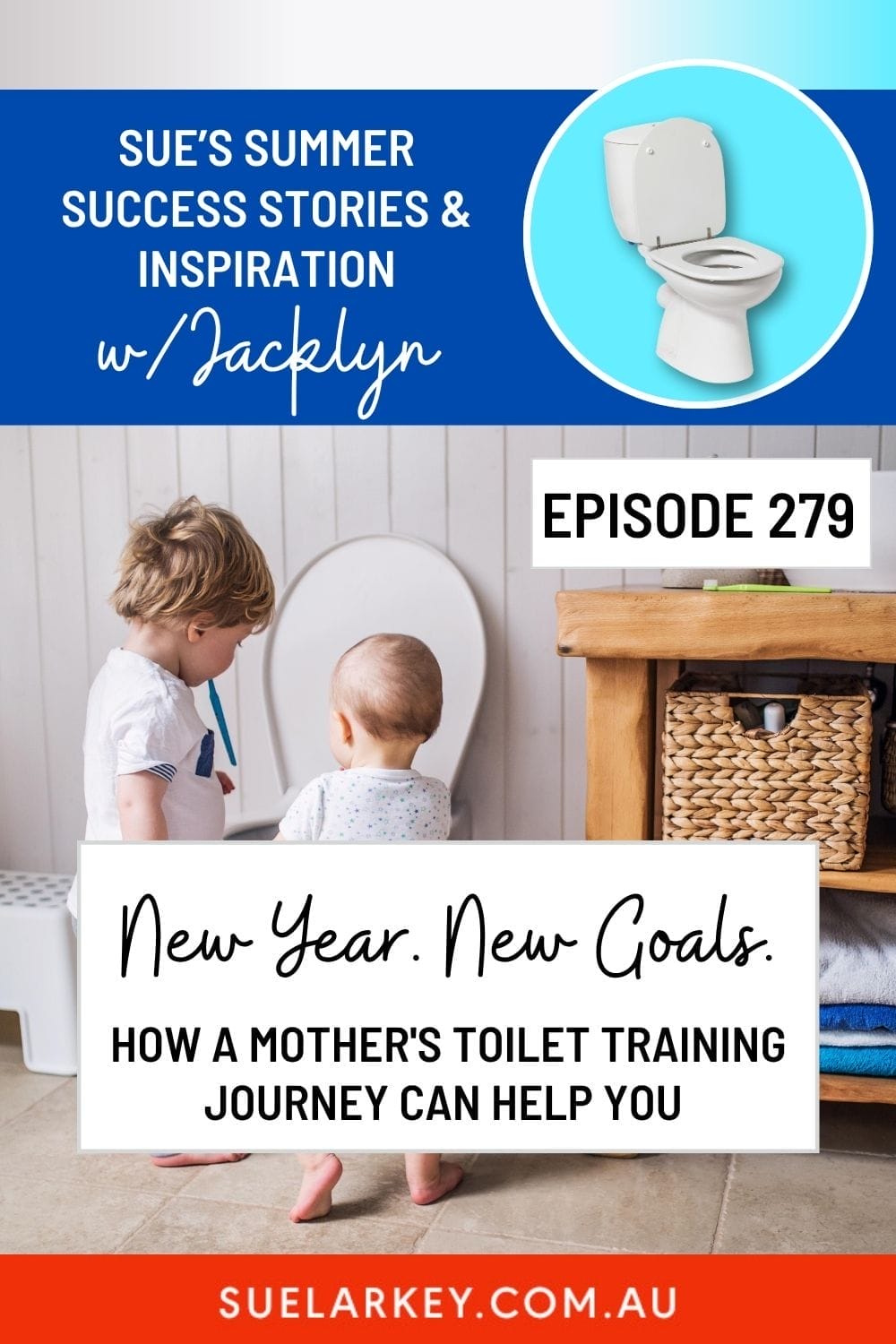

 2 Hours
2 Hours

 Sorry we no longer ship items outside Australia. Please consider the digital versions of Sue’s Books –
Sorry we no longer ship items outside Australia. Please consider the digital versions of Sue’s Books – 